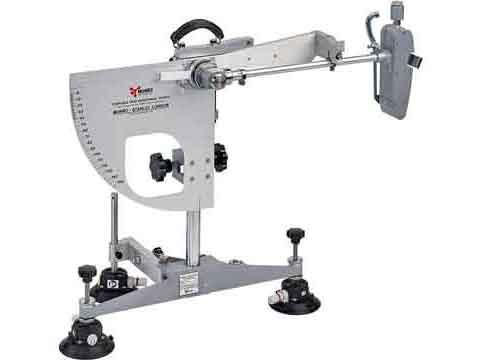Slip Resistance Testing Standards
Slip resistance refers to the measure of a surface's ability to provide sufficient friction or traction to prevent slips and falls. It is a property that plays a vital role in ensuring safety, particularly in areas where the risk of slips is high.
The Importance of Slip Resistance
Slip resistance is essential because it directly impacts the well-being of individuals. Accidents resulting from slips and falls can lead to injuries ranging from minor bruises to severe fractures or even fatalities. Consequently, understanding slip resistance and its significance is paramount in various contexts.
Factors Affecting Slip Resistance
Surface Material
The type of surface material used is a critical determinant of slip resistance. Different materials exhibit varying levels of slip resistance due to their inherent properties.
Contaminants
Contaminants on surfaces, such as water, oil, or loose particles, can significantly reduce slip resistance. Identifying and addressing these contaminants are vital steps in maintaining a safe environment.
Footwear
The type of footwear individuals wear also influences slip resistance. Proper footwear selection can make a substantial difference in preventing accidents.
International Slip Resistance Standards
ASTM International Standards
ASTM International, formerly known as the American Society for Testing and Materials, has developed a range of standards related to slip resistance testing. These standards provide guidelines for testing methods and equipment.
European EN Standards
In Europe, the EN standards outline specific requirements and testing procedures to assess the slip resistance of surfaces. These standards are widely adopted across the continent.
Testing Methods and Equipment
Pendulum Tester
The pendulum tester, also known as the British Pendulum Tester, measures the dynamic coefficient of friction (DCOF) of a surface. It is often used in the assessment of pedestrian walkways.
Coefficient of Friction (COF)
The coefficient of friction is a fundamental parameter in slip testing. It quantifies the level of friction between two surfaces in contact.
Compliance and Regulations
Workplace Safety Requirements
Workplaces are required to adhere to slip resistance standards to ensure the safety of employees. Failure to comply with these regulations can result in legal consequences and workplace accidents.
Building Codes and Regulations
Building codes and regulations often incorporate slip Testing requirements, particularly in areas prone to wet or slippery conditions.
Benefits of Adhering to Slip Resistance Standards
Reduced Accidents and Injuries
Adhering to slip resistance standards leads to a significant reduction in slip and fall accidents, resulting in fewer injuries and associated costs.
Legal Protection
Compliance with slip resistance standards provides legal protection for businesses and property owners. It demonstrates a commitment to safety.
Industries and Sectors Affected
Hospitality and Tourism
The hospitality and tourism industry places a high emphasis on slip resistance due to the frequent presence of guests and visitors.
Healthcare Facilities
Healthcare facilities, where patient safety is paramount, implement stringent slip resistance measures.
Manufacturing
Manufacturing environments benefit from slip resistance standards to protect workers in industrial settings.
Slip Resistance in Residential Settings
Home Safety Measures
Implementing slip resistance measures at home can prevent accidents, especially in areas like bathrooms and kitchens.
Outdoor Spaces
Slip resistance in outdoor spaces, such as patios and decks, is essential to ensure safety during various weather conditions.
Choosing the Right Flooring
Non-Slip Flooring Options
Selecting the right flooring material with built-in slip resistance properties is key to preventing accidents.
Maintenance and Durability
Regular maintenance of flooring surfaces is essential to retain their slip resistance characteristics over time.
Importance of Regular Testing
Periodic Assessment
Regular slip testing ensures that surfaces continue to meet safety standards over time.
Remedial Measures
In cases where slip resistance is compromised, remedial measures can be taken to restore safety.
The Role of Footwear
Slip-Resistant Footwear
Encouraging the use of slip-resistant footwear among employees can significantly reduce workplace accidents.
Employee Education
Educating employees about the importance of slip-resistant footwear and its proper use is vital for safety.
Creating Awareness
Training Programs
Implementing training programs can educate individuals about slip resistance and safe practices.
Public Awareness Campaigns
Public awareness campaigns can highlight the importance of slip resistance in preventing accidents in public spaces.
The Economics of Safety
Cost-Benefit Analysis
A cost-benefit analysis often reveals that investing in slip resistance measures is financially sound due to the reduction in accidents.
Insurance Implications
Insurance premiums may be lower for businesses that comply with slip resistance standards, as they are considered lower-risk.
Share
Recent posts
-
Why is the Pendulum Tester the Preferred Method for Slip Testing?
Posted 9th April, 2024 -
How to Prevent Slippery Floors
Posted 9th April, 2024 -
Slip Risk Assessment in Laboratories
Posted 9th April, 2024 -
Benefits of Slip Risk Assessment Service
Posted 9th April, 2024 -
Slip and Fall Accident Report Guide
Posted 22nd February, 2024 -
What is pendulum slip testing and how does it assess slip resistance?
Posted 28th January, 2024

